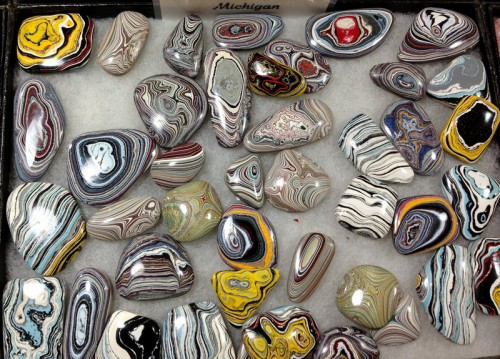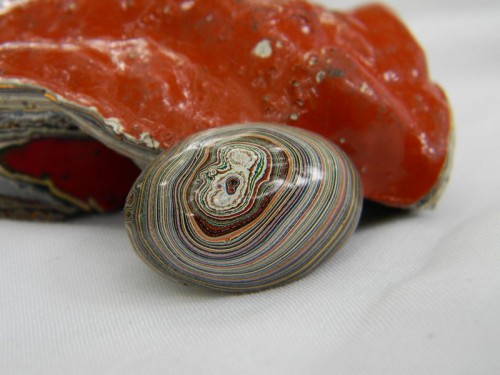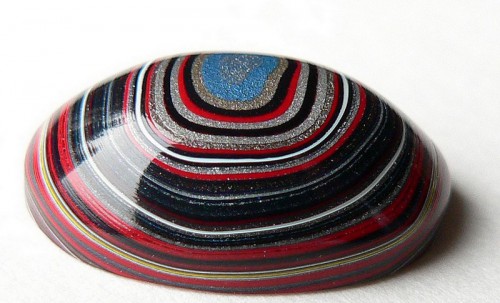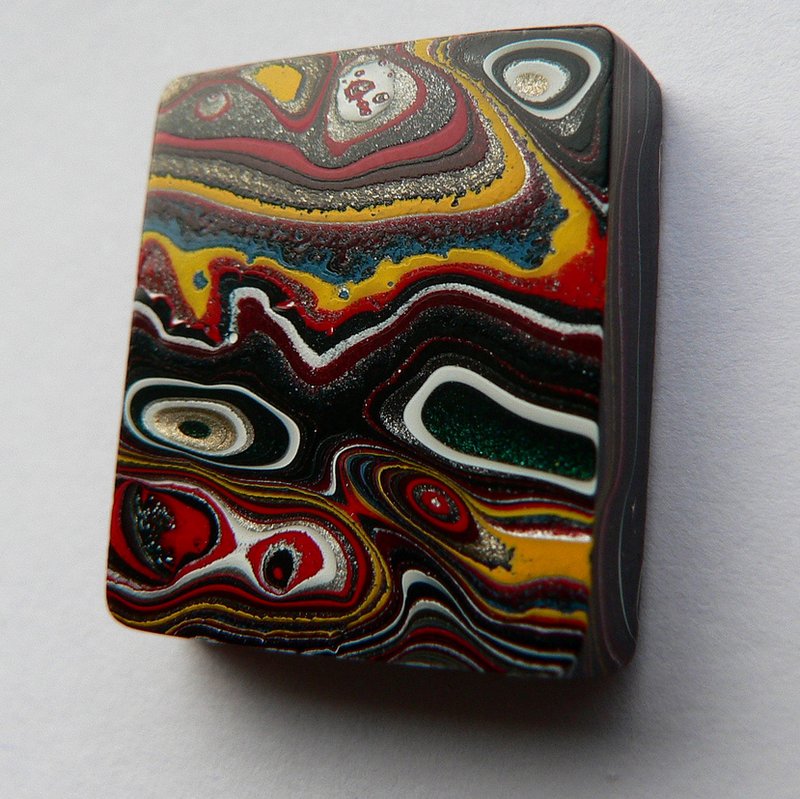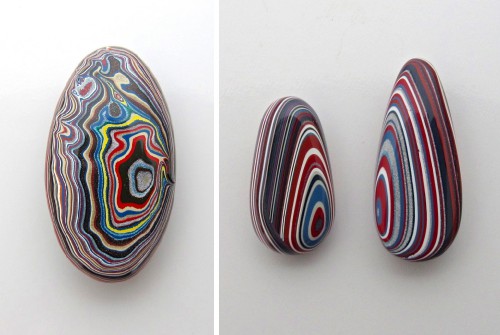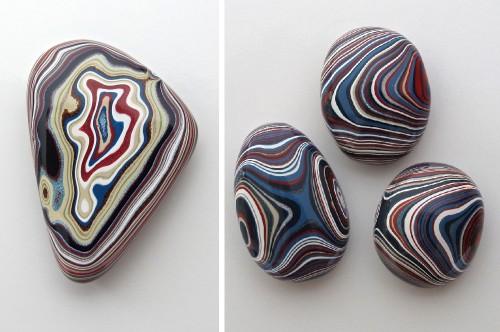Old car factories had a harmful impact on the environment, releasing toxic chemicals into the air, land and water. But it wasn’t all ugly. Oddly enough, one of the by-products of car production was Fordite, also known as Detroit agate. The colorful layered objects take their name from agate stones for their visual resemblance. But instead of forming from microscopically crystallized silica over millions of years, Fordite was formed from layers of paint over several tens of years. Back in the day, old automobile paint would drip onto the metal racks that transported cars through the paint shop and into the oven. The paint was hardened to a rock-like state thanks to high heats from the baking process. As the urban legend goes, plant workers would take pieces home in their lunch pails as a souvenir for their wife or kids.
Since then, car production has modernized and Fordite has been rendered a relic of the past. Artisans have been using the colorful material for jewelry but it’s not a stretch to imagine a future when these pieces sit behind glass in a museum. The colors can also be used to judge how old they are because car paint was subject to different trends. In the 1940s cars were mostly black or brown enamel while the 1960s ushered in an age of colorful lacquers.
[via colossal]
